ManagedEngine ServiceDesk Plus (Zoho) Connector for Azure Data Factory (Pipeline)
ManagedEngine (Zoho) ServiceDesk Plus Connector can be used to integrate ServiceDesk Plus data in your App / BI Tools. You can read/write Requests, Tasks, Comments, Worklogs and many other items.
In this article you will learn how to quickly and efficiently integrate ManagedEngine ServiceDesk Plus (Zoho) data in Azure Data Factory (Pipeline) without coding. We will use high-performance ManagedEngine ServiceDesk Plus (Zoho) Connector to easily connect to ManagedEngine ServiceDesk Plus (Zoho) and then access the data inside Azure Data Factory (Pipeline).
Let's follow the steps below to see how we can accomplish that!
ManagedEngine ServiceDesk Plus (Zoho) Connector for Azure Data Factory (Pipeline) is based on ZappySys API Driver which is part of ODBC PowerPack. It is a collection of high-performance ODBC drivers that enable you to integrate data in SQL Server, SSIS, a programming language, or any other ODBC-compatible application. ODBC PowerPack supports various file formats, sources and destinations, including REST/SOAP API, SFTP/FTP, storage services, and plain files, to mention a few.
Create ODBC Data Source (DSN) based on ZappySys API Driver
Step-by-step instructions
To get data from ManagedEngine ServiceDesk Plus (Zoho) using Azure Data Factory (Pipeline) we first need to create a DSN (Data Source) which will access data from ManagedEngine ServiceDesk Plus (Zoho). We will later be able to read data using Azure Data Factory (Pipeline). Perform these steps:
-
Download and install ODBC PowerPack.
-
Open ODBC Data Sources (x64):

-
Create a User data source (User DSN) based on ZappySys API Driver
ZappySys API Driver
-
Create and use User DSN
if the client application is run under a User Account.
This is an ideal option
in design-time , when developing a solution, e.g. in Visual Studio 2019. Use it for both type of applications - 64-bit and 32-bit. -
Create and use System DSN
if the client application is launched under a System Account, e.g. as a Windows Service.
Usually, this is an ideal option to use
in a production environment . Use ODBC Data Source Administrator (32-bit), instead of 64-bit version, if Windows Service is a 32-bit application.
Azure Data Factory (Pipeline) uses a Service Account, when a solution is deployed to production environment, therefore for production environment you have to create and use a System DSN. -
Create and use User DSN
if the client application is run under a User Account.
This is an ideal option
-
When the Configuration window appears give your data source a name if you haven't done that already, then select "ManagedEngine ServiceDesk Plus (Zoho)" from the list of Popular Connectors. If "ManagedEngine ServiceDesk Plus (Zoho)" is not present in the list, then click "Search Online" and download it. Then set the path to the location where you downloaded it. Finally, click Continue >> to proceed with configuring the DSN:
ManagedengineServicedeskPlusZohoDSNManagedEngine ServiceDesk Plus (Zoho)
-
Now it's time to configure the Connection Manager. Select Authentication Type, e.g. Token Authentication. Then select API Base URL (in most cases, the default one is the right one). More info is available in the Authentication section.
ManagedEngine ServiceDesk Plus (Zoho) authentication
OAuth Connection for ManageEngine ServiceDesk Plus API [API reference]
To register custom App, perform the following steps (Detailed steps found in the help link at the end)- Go to Zoho API Console
- Click Add Client link
- Select Server-based Applications option
- Enter desired client name (Display purpose only)
- Enter some URL for Company homepage
- For Authorized Redirect URI enter https://zappysys.com/oauth (Or enter your own but we recommend using ZappySys one if possible). This URL must match on Zoho Connector UI.
- Click CREATE.
- Copy Client ID and Secret and paste on Zoho Connector UI.
API Connection Manager configuration
Just perform these simple steps to finish authentication configuration:
-
Set Authentication Type to
OAuth [OAuth] - Optional step. Modify API Base URL if needed (in most cases default will work).
- Fill in all the required parameters and set optional parameters if needed.
- Press Generate Token button to generate the tokens.
- Finally, hit OK button:
ManagedengineServicedeskPlusZohoDSNManagedEngine ServiceDesk Plus (Zoho)OAuth [OAuth]https://sdpondemand.manageengine.com/api/v3Optional Parameters ClientId ClientSecret Permissions SDPOnDemand.requests.ALL AccountUrl https://accounts.zoho.com RedirectUrl https://zappysys.com/oauth RetryMode RetryWhenStatusCodeMatch RetryStatusCodeList 429 RetryCountMax 5 RetryMultiplyWaitTime True 
-
Once the data source connection has been configured, it's time to configure the SQL query. Select the Preview tab and then click Query Builder button to configure the SQL query:
 ZappySys API Driver - ManagedEngine ServiceDesk Plus (Zoho)ManagedEngine (Zoho) ServiceDesk Plus Connector can be used to integrate ServiceDesk Plus data in your App / BI Tools. You can read/write Requests, Tasks, Comments, Worklogs and many other items.ManagedengineServicedeskPlusZohoDSN
ZappySys API Driver - ManagedEngine ServiceDesk Plus (Zoho)ManagedEngine (Zoho) ServiceDesk Plus Connector can be used to integrate ServiceDesk Plus data in your App / BI Tools. You can read/write Requests, Tasks, Comments, Worklogs and many other items.ManagedengineServicedeskPlusZohoDSN
-
Start by selecting the Table or Endpoint you are interested in and then configure the parameters. This will generate a query that we will use in Azure Data Factory (Pipeline) to retrieve data from ManagedEngine ServiceDesk Plus (Zoho). Hit OK button to use this query in the next step.
SELECT * FROM Requests Some parameters configured in this window will be passed to the ManagedEngine ServiceDesk Plus (Zoho) API, e.g. filtering parameters. It means that filtering will be done on the server side (instead of the client side), enabling you to get only the meaningful data
Some parameters configured in this window will be passed to the ManagedEngine ServiceDesk Plus (Zoho) API, e.g. filtering parameters. It means that filtering will be done on the server side (instead of the client side), enabling you to get only the meaningful datamuch faster . -
Now hit Preview Data button to preview the data using the generated SQL query. If you are satisfied with the result, use this query in Azure Data Factory (Pipeline):
 ZappySys API Driver - ManagedEngine ServiceDesk Plus (Zoho)ManagedEngine (Zoho) ServiceDesk Plus Connector can be used to integrate ServiceDesk Plus data in your App / BI Tools. You can read/write Requests, Tasks, Comments, Worklogs and many other items.ManagedengineServicedeskPlusZohoDSN
ZappySys API Driver - ManagedEngine ServiceDesk Plus (Zoho)ManagedEngine (Zoho) ServiceDesk Plus Connector can be used to integrate ServiceDesk Plus data in your App / BI Tools. You can read/write Requests, Tasks, Comments, Worklogs and many other items.ManagedengineServicedeskPlusZohoDSNSELECT * FROM Requests You can also access data quickly from the tables dropdown by selecting <Select table>.A
You can also access data quickly from the tables dropdown by selecting <Select table>.AWHEREclause,LIMITkeyword will be performed on the client side, meaning that thewhole result set will be retrieved from the ManagedEngine ServiceDesk Plus (Zoho) API first, and only then the filtering will be applied to the data. If possible, it is recommended to use parameters in Query Builder to filter the data on the server side (in ManagedEngine ServiceDesk Plus (Zoho) servers). -
Click OK to finish creating the data source.
Video Tutorial
Read data in Azure Data Factory (ADF) from ODBC datasource (ManagedEngine ServiceDesk Plus (Zoho))
-
To start press New button:
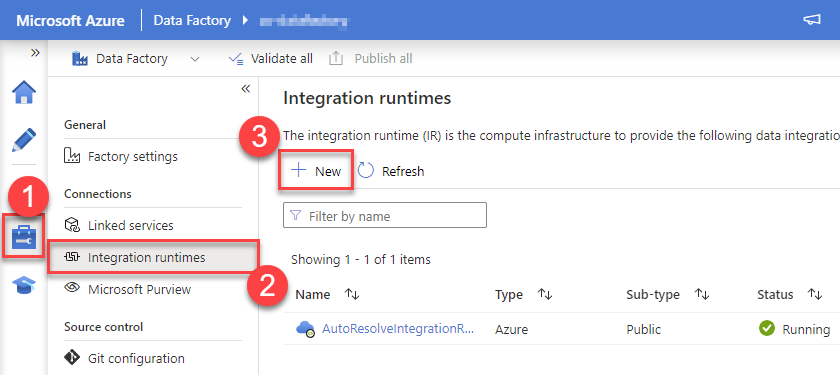
-
Select "Azure, Self-Hosted" option:
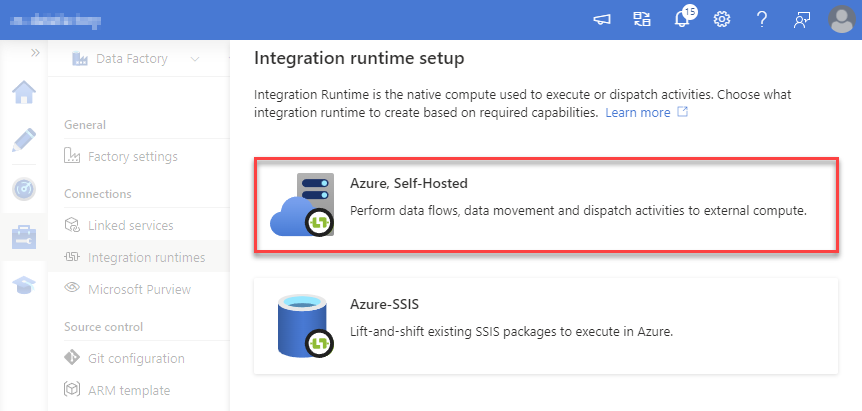
-
Select "Self-Hosted" option:
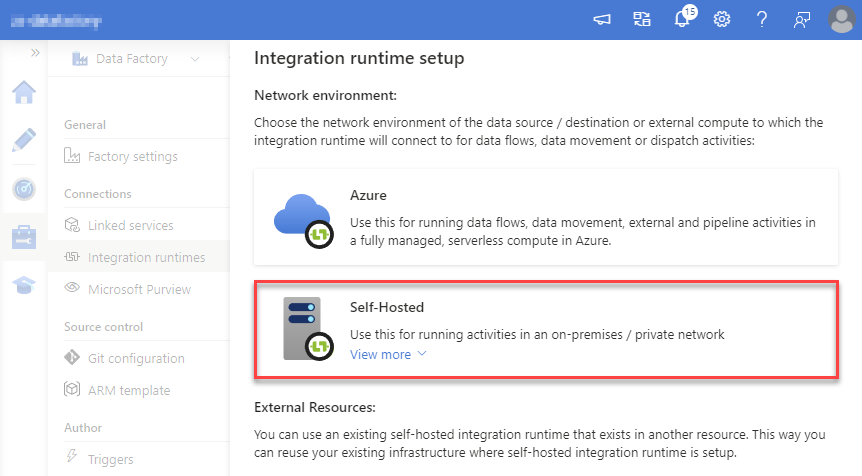
-
Set a name, we will use "OnPremisesRuntime":
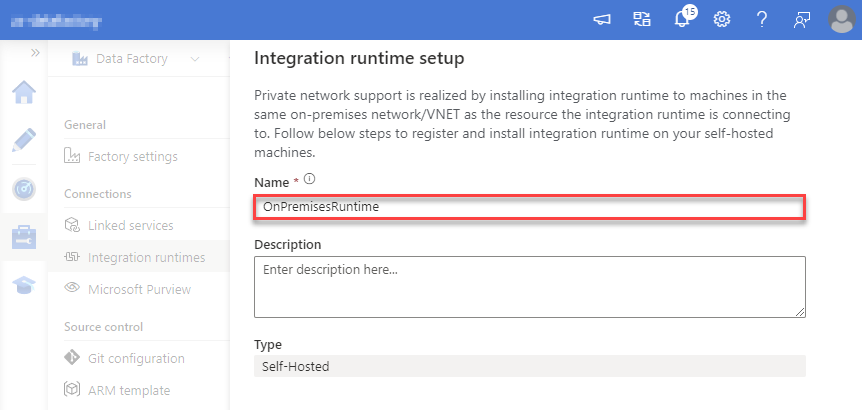
-
Download and install Microsoft Integration Runtime.
-
Launch Integration Runtime and copy/paste Authentication Key from Integration Runtime configuration in Azure Portal:
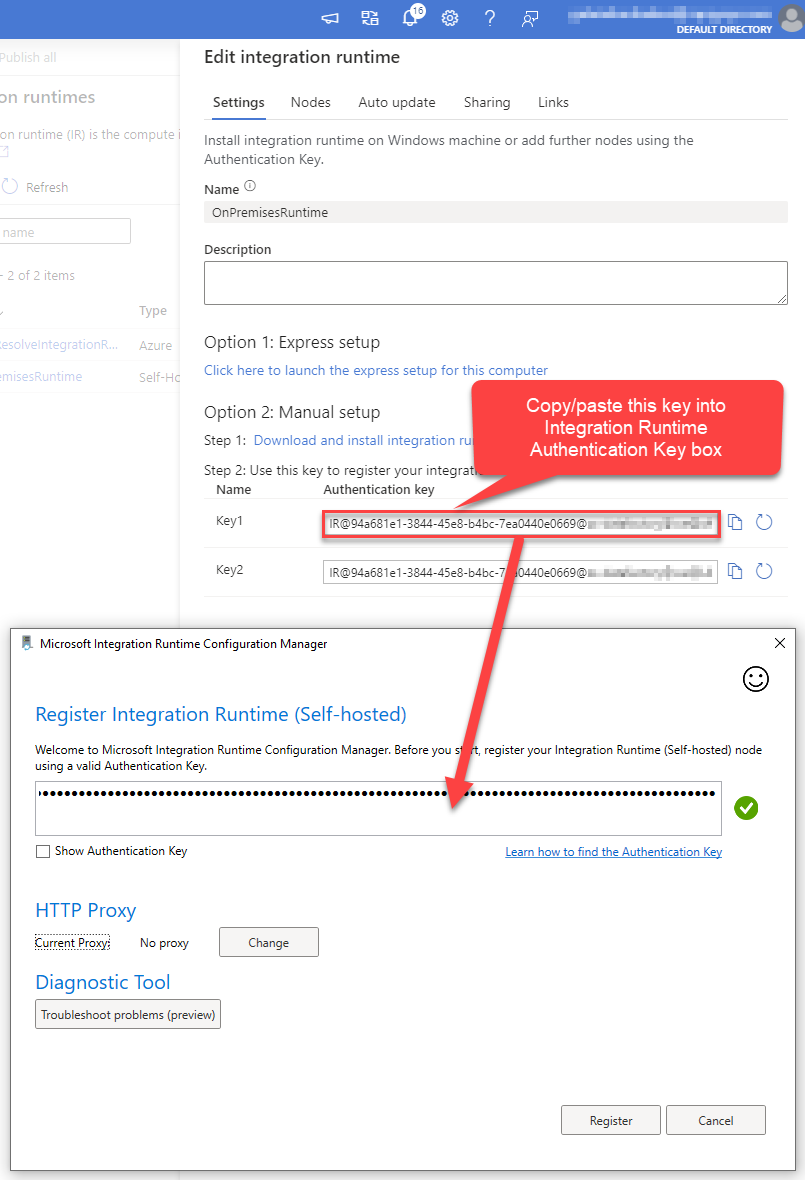
-
After finishing registering the Integration Runtime node, you should see a similar view:
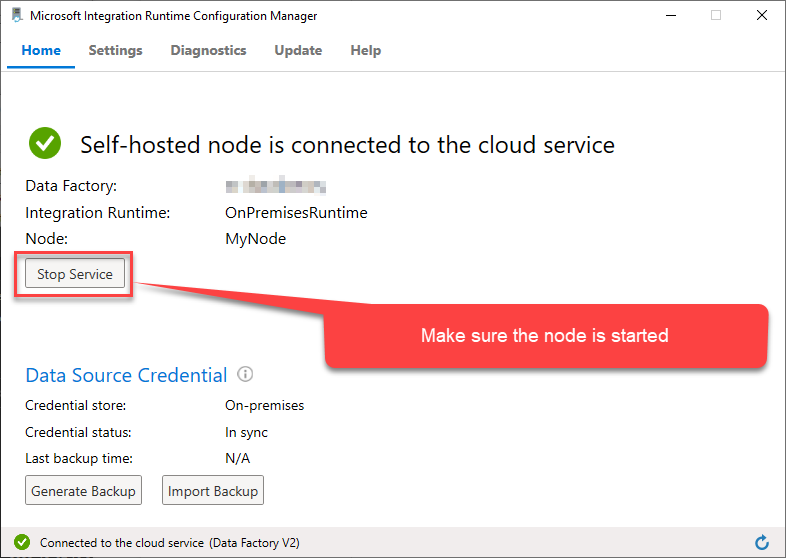
-
Go back to Azure Portal and finish adding new Integration Runtime. You should see it was successfully added:
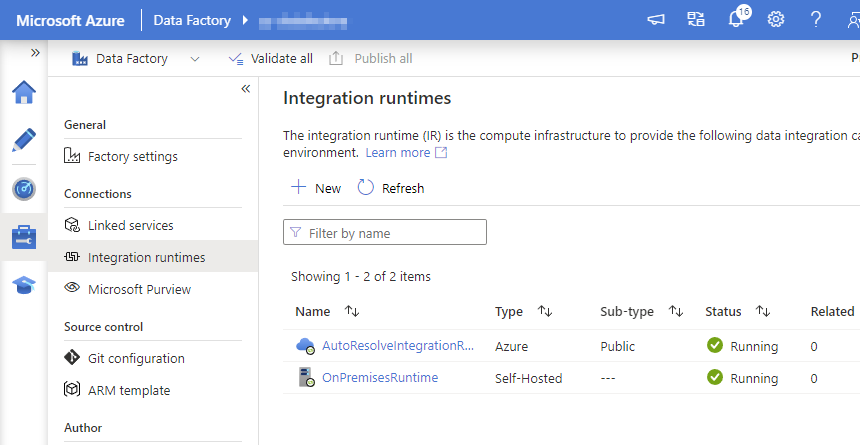
-
Go to Linked services section and create a new Linked service based on ODBC:
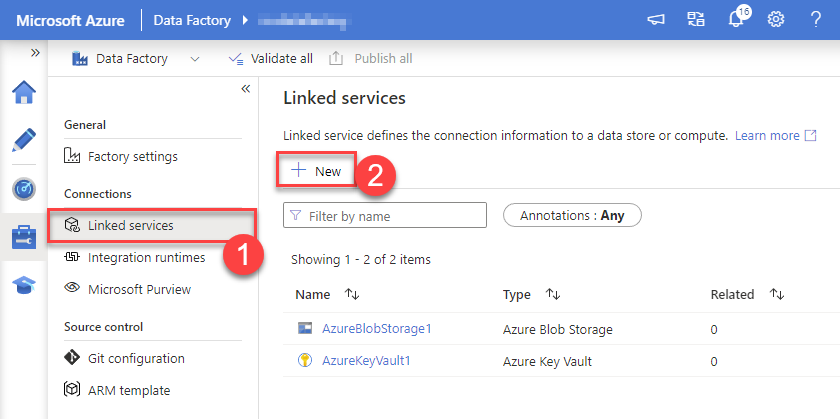
-
Select "ODBC" service:
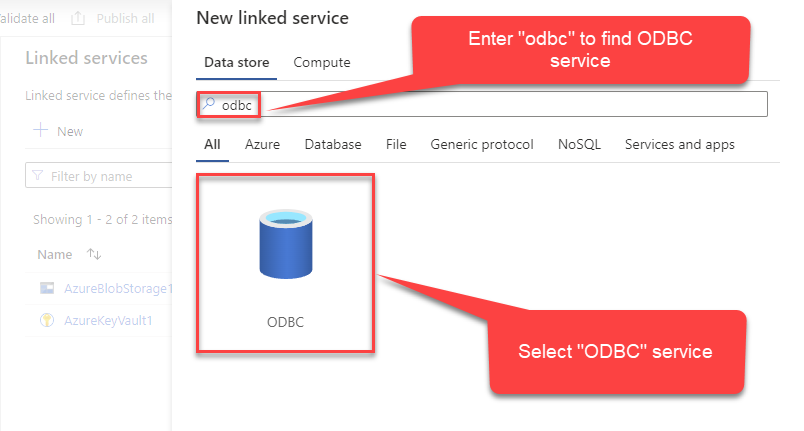
-
Configure new ODBC service. Use the same DSN name we used in the previous step and copy it to Connection string box:
ManagedengineServicedeskPlusZohoDSNDSN=ManagedengineServicedeskPlusZohoDSN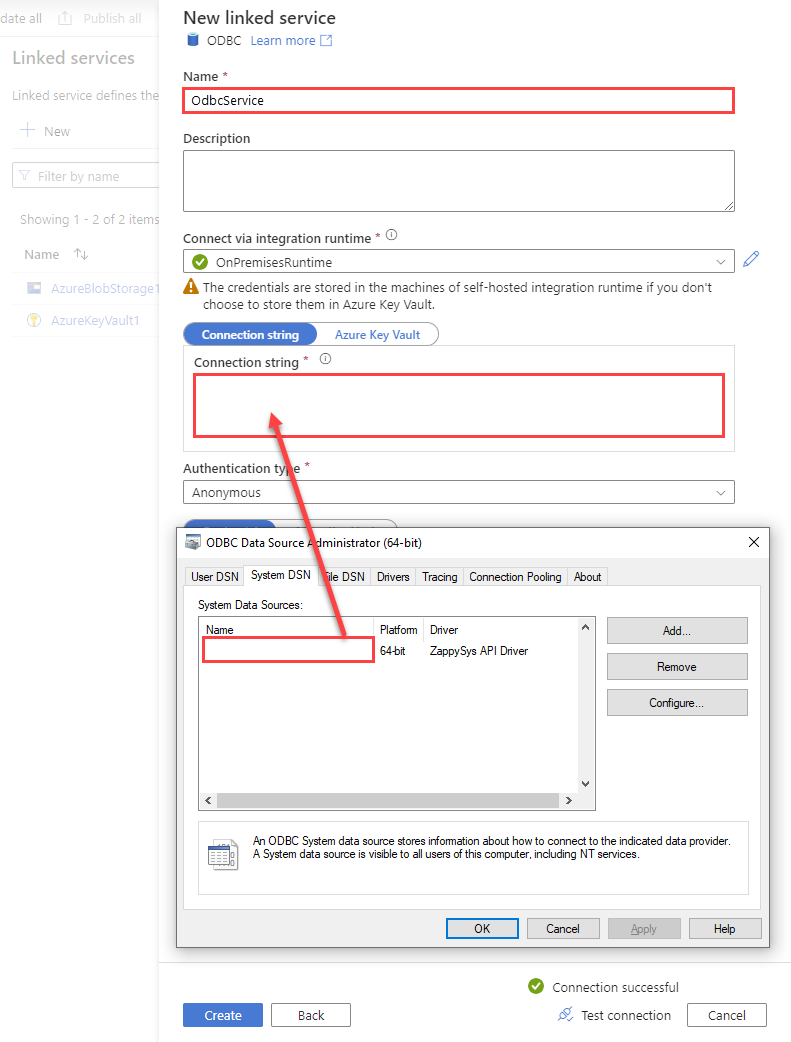
-
For created ODBC service create ODBC-based dataset:
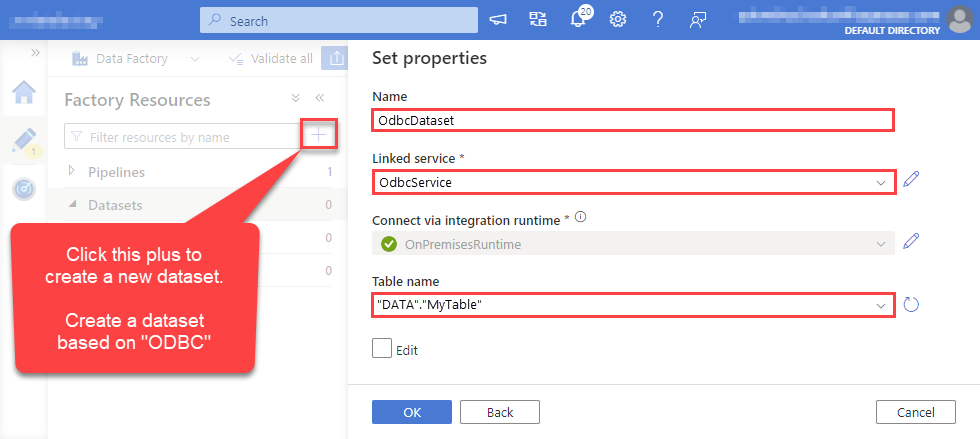
-
Go to your pipeline and add Copy data connector into the flow. In Source section use OdbcDataset we created as a source dataset:
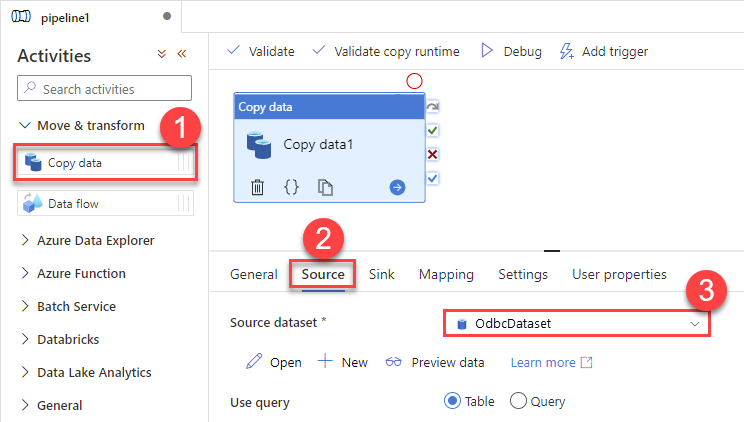
-
Then go to Sink section and select a destination/sink dataset. In this example we use precreated AzureBlobStorageDataset which saves data into an Azure Blob:
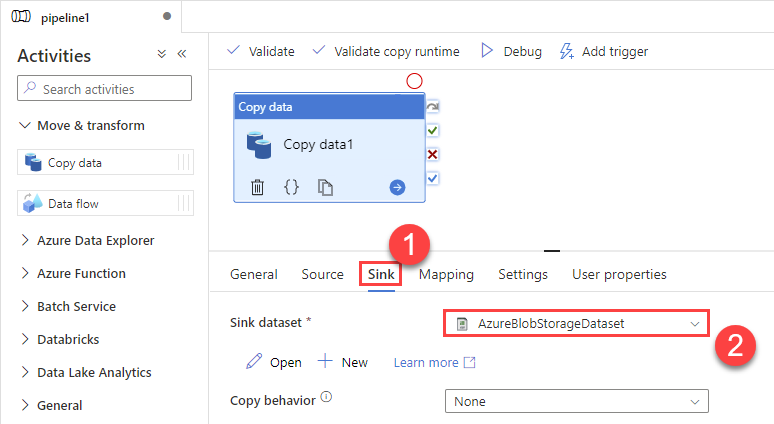
-
Finally, run the pipeline and see data being transferred from OdbcDataset to your destination dataset:
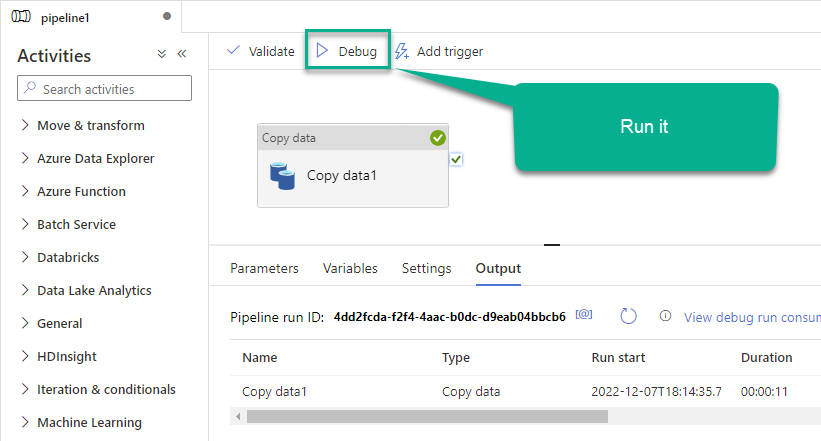
Actions supported by ManagedEngine ServiceDesk Plus (Zoho) Connector
Learn how to perform common ManagedEngine ServiceDesk Plus (Zoho) actions directly in Azure Data Factory (Pipeline) with these how-to guides:
- Delete Request
- Get Asset Details
- Get Assets
- Get Change Details
- Get Change Note Details
- Get Change Notes
- Get Change Task Comment Details
- Get Change Task Comments
- Get Change Task Details
- Get Change Task Worklog Details
- Get Change Task Worklogs
- Get Change Tasks
- Get Change Worklog Details
- Get Change Worklogs
- Get Changes
- Get Contract Details
- Get Contracts
- Get Problem Details
- Get Problem Note Details
- Get Problem Notes
- Get Problem Task Comment Details
- Get Problem Task Comments
- Get Problem Task Details
- Get Problem Task Worklog Details
- Get Problem Task Worklogs
- Get Problem Tasks
- Get Problem Worklog Details
- Get Problem Worklogs
- Get Problems
- Get Project Details
- Get Project Members
- Get Project Milestone Tasks
- Get Project Milestones
- Get Project Note Details
- Get Project Notes
- Get Project Task Comment Details
- Get Project Task Comments
- Get Project Task Details
- Get Project Task Worklog Details
- Get Project Task Worklogs
- Get Project Tasks
- Get Project Worklog Details
- Get Project Worklogs
- Get Projects
- Get Purchase Order Details
- Get Purchase Orders
- Get Release Details
- Get Release Note Details
- Get Release Notes
- Get Release Task Comment Details
- Get Release Task Comments
- Get Release Task Details
- Get Release Task Worklog Details
- Get Release Task Worklogs
- Get Release Tasks
- Get Release Worklog Details
- Get Release Worklogs
- Get Releases
- Get Request Details
- Get Request Note Details
- Get Request Notes
- Get Request Task Comment Details
- Get Request Task Comments
- Get Request Task Details
- Get Request Task Worklog Details
- Get Request Task Worklogs
- Get Request Tasks
- Get Request Worklog Details
- Get Request Worklogs
- Get Requests
- Get Task Details
- Get Tasks
- Test Connection
- Make Generic API Request
- Make Generic API Request (Bulk Write)
Conclusion
In this article we showed you how to connect to ManagedEngine ServiceDesk Plus (Zoho) in Azure Data Factory (Pipeline) and integrate data without any coding, saving you time and effort.
We encourage you to download ManagedEngine ServiceDesk Plus (Zoho) Connector for Azure Data Factory (Pipeline) and see how easy it is to use it for yourself or your team.
If you have any questions, feel free to contact ZappySys support team. You can also open a live chat immediately by clicking on the chat icon below.
Download ManagedEngine ServiceDesk Plus (Zoho) Connector for Azure Data Factory (Pipeline) Documentation











































































